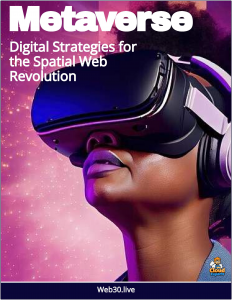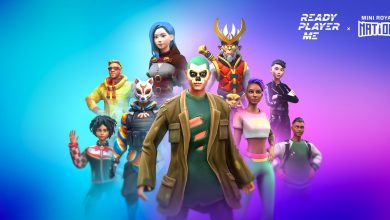 An especially powerful concept is where and how the Metaverse will intersect with Augmented Reality (AR).
An especially powerful concept is where and how the Metaverse will intersect with Augmented Reality (AR).
To date most conversations about the Metaverse are dominated by the idea it is a space you will enter, typically via a VR headset.
Niantic CEO John Hanke has a different vision, one where the Metaverse is not constrained to a world you enter, but rather it is infused on to the world you live in.
The Real World Metaverse
In his interviews with Wired and the FT John explains his simple idea, that being outside is much healthier for humans than being locked away indoors, something that is entirely relatable as we look back on two years of a Covid suppressed world and being online endlessly via Zoom meeting, a soul destroying experience. Ergo the VR-based Metaverse will be this x100.
So the opposite, inspiring ideal is that the Metaverse can instead enhance and improve our human experience. He recounts how those that played Pokemon Go, the first venture Niantic created on this journey, reported being physically active much more. John describes how finding ways to encourage his own kids to participate more in outdoor activities has been a key personal motivation.
As the term suggests the idea of the AR Metaverse is about enhancing your experience of reality with extra information, a form of spatial computing, what Niantic is accelerating through innovations such as launching their visual positioning system, which the company says will allow AR devices to tap into a shared digital map to establish their real-world position with “centimeter precision.”
John references a simplistic example of QR codes, a way of linking reality to computing such that it yields helpful information such as the latest train time, with the goal of their AR map being the same effect but without this step being needed.
It’s going to feel like the world is this living surface and there’s just stuff that will help you appreciate it more, or navigate it more easily, or do some transaction that you want to do, just more seamlessly.
That’s certainly a much more encouraging vision of the Metaverse, one that brims with potential for a myriad of exciting scenarios of benefit to society and to business. Tourism in particular, where you can overlay a historical reenactment in the place it happened centuries before for example.
John’s mission now is to enable developers to build their own Pokemon Go type games and experiences. As TechCrunch reports they launched ‘Lightship‘, an AR Developer Kit (ARDK) that will make building augmented reality experiences more accessible. This free, openly available technology will help Niantic lay the foundation for its vision of the Real World Metaverse.
Ingress – Developing ‘Live Fiction Gaming’
A very powerful demonstration of this effect is the concept of ‘Live Fiction Gaming’.
Pokemon Go was preceded by Ingress (Wikipedia), which while not as well known achieved a similar scale of engagement and offers a slightly more nuanced case study to explore the potential for location-centric AR gaming. The story is introduced and explained here and here, and Colin Williams provides a starter guide.
At this DICE talk John Hanke explores the core concept, what he describes as ‘Live Fiction’ gaming. As the term suggests this refers to game play that is intertwined with and defined by a compelling story, in this case the battle between ‘The Enlightened’ and ‘The Resistance’ for control of Earth.
It’s not just a backdrop to set the scene but rather an integrated format, where ongoing developments in the storyline affect what happens in the game play and also vice versa, outcomes of gaming affect how that storyline evolves.
What is particularly interesting is how that story is communicated to players, ranging from books and comics that provide snapshots of progress and also explainer on-ramps for new members, through to filmed scenes and cryptic social media messages. These messages contain clues that ‘hackers’ within the game crack and then share with other players.
This highlights how the mobile app is only the base building block for the game experience, which is formed in totality as an overall universe of multiple mediums and content, enabling a very deep immersion both in terms of gaming but also critically storytelling narrative.



